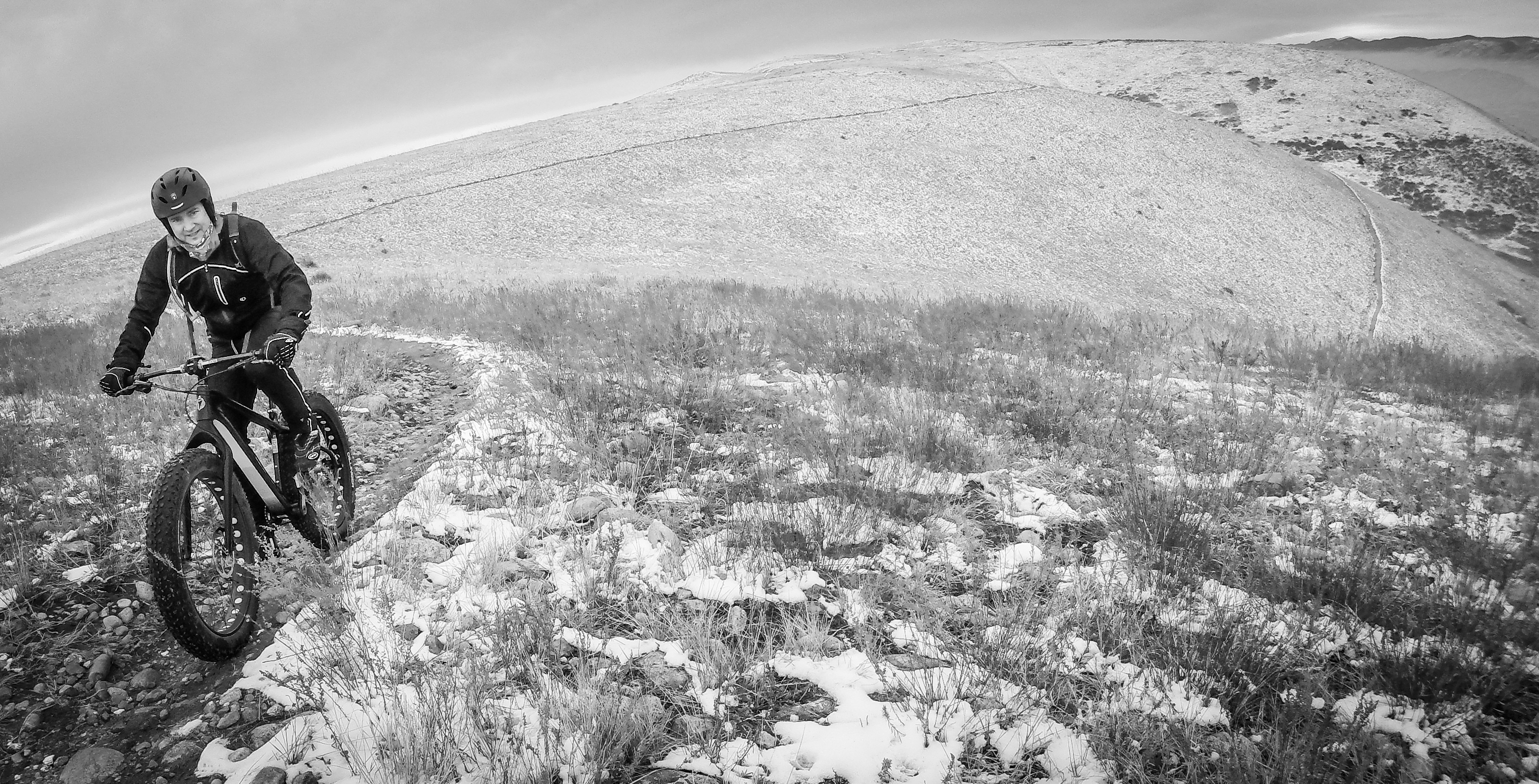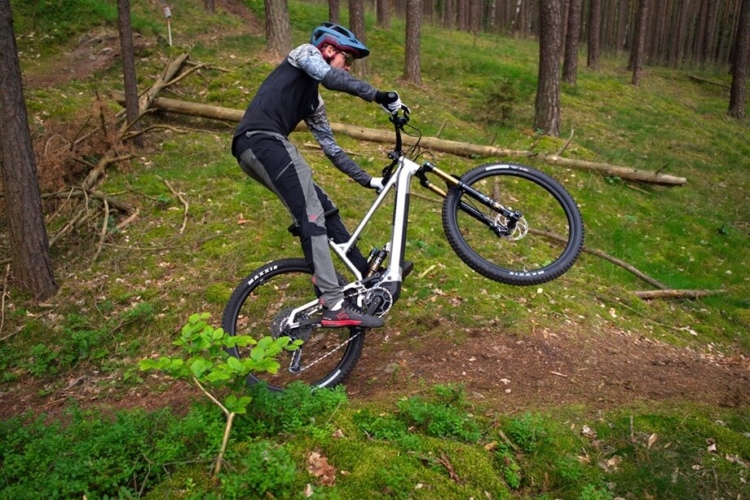
As I sipped coffee and braced myself against the cold wind whipping across the lake at Yellow Creek State Park, I listened to 12-year-old Luly speak in nervous anticipation of her first mountain bike race. Luly is a member of the Centre County Crows, a youth mountain bike team based out of State College, PA. The Crows are one of the 23 teams formed this year for the inaugural season of the Pennsylvania Interscholastic Cycling League (PICL), sanctioned by the National Interscholastic Cycling Association (NICA).
I attended the fourth out of five races this past fall, eager to get a taste of what NICA was all about. I lent a hand with course setup in the morning, and then hung out with the Crows as they got ready to ride. Young Luly reminded me a lot of myself only a couple months prior, when I too raced for the first time in almost 15 years, and felt similar feelings of nervousness. Though her teammates were almost finished with their season, she’d decided late in the game that she wanted to join the team and give racing a try. After she told me what trails she normally rides back home, I felt certain that she would walk away from today with the top podium spot in her class.
[see_also id=”194627″][/see_also]
I was right, and she was just one of many success stories that came out of the first season of PICL. By the numbers, the league was one of the most successful startups of any in the history of NICA. But more important than numerical figures are the experiences of the participants, and the positive change that happens as a result.

No One Sits on the Bench
The National Interscholastic Cycling Association (NICA) was founded in 2009 as an umbrella organization to help develop youth mountain biking programs and provide support for regional leagues across the nation. The idea was to create racing standards and make mountain biking look like other interscholastic sports, with a defined pre-season, race season, and off-season. But unlike most other sports, racing and competition are not necessarily the focus. While it provides a goal for student-athletes to work towards and incentive to push themselves, the main objective of NICA is simply getting more kids on bikes. Racing is not mandated for all team members, but anyone who wants to race can do so. There are no tryouts. There are no cuts. Every team member gets to participate as much or as little as he or she wants. No one sits on the bench.
[see_also id=”189813″][/see_also]
In NICA racing, each grade (6-12th) and gender has their own class and start time. The course for middle schoolers typically consists of multiple laps of a 2.5-3.5-mile loop, while each high school lap is 4.5-6 miles long. The number of laps that athletes complete depends on their grade and gender. Middle schoolers typically ride anywhere from 5-7 miles, while high schoolers ride 9-20 (senior aka varsity boys ride the longest distance). Standards across the board for course length and duration of ride time are designed to push the athletes, yet still allow everyone to have fun, and some level of consistency also means the coaches and kids know what to prepare for.


Bringing Youth Mountain Biking to PA
A high school mountain bike race league has been in the back of Mike Kuhn’s head for a while, but it wasn’t until three years ago that he was in the right place in his life with enough support to turn that dream into a reality. Kuhn, along with a core group of 5-6 others, worked for two and a half years to get the league up and running. With the monetary support of sponsors and fundraisers, and the dedicated efforts of team coaches across the state, PICL launched a successful first season of youth mountain bike racing. Five different events all over the state brought almost 300 kids out to ride and race their bikes. Within five years, Kuhn hopes that number will reach 2,000.
While the startup of PICL has not been without its challenges, namely funding and getting enough people involved to tackle the workload, its future looks promising. Eventually, if enough teams get involved, the league may split into east, west, and central conferences, which would help eliminate the long drive times for many of the kids to get to races.
And the rewards have significantly outweighed the challenges–like the father who thanked Kuhn for putting on the races, because it brought out something in his son that he never knew he had, the mother who said that her daughter had finally found a sport she enjoyed after trying many others, and the kids who are more engaged, confident, and successful in school because they are getting exercise outside.

More than Just Kids on Bikes
I was surprised to learn that 80% of the kids who participated in PICL this year did not come from a cycling background–meaning that their families aren’t cyclists either. These are kids that probably wouldn’t otherwise be exposed to the sport, at least not until they were much older. With the help of the dedicated coaches and the framework of the league itself, these young men and women are being given the opportunity to take on an activity that will have a positive impact on their lives for years to come.
[see_also id=”186159″][/see_also]
And more kids on bikes isn’t just great for the kids–it ultimately results in parents, families, and friends who are more aware of cyclists on the road, or who are more involved in creating safer bike routes. It creates a community that is more aware of cycling, the outdoors, and physical fitness in general. It helps to mainstream the idea that high school athletics can go beyond traditional ball sports.

In addition, the Teen Trail Corps, a joint effort between NICA and IMBA, is a way for student-athletes to give back to their home trails. In PA, the hope is that putting in at least 10 hours of trail work each season will become a mandated part of belonging to a mountain bike team, fostering a sense of responsibility and community.

I wish that the NICA program and PICL had existed when I was in high school. It might have meant me sticking with it rather than giving up mountain biking for more socially-normal activities as a teenager–something I certainly regret. Hindsight is 20-20, and there’s nothing I can do about my own past, but I’m happy to report that kids toady now can have what I didn’t–a network of peers who ride, a race league that encourages friendly competition and pushing personal limits while promoting inclusion, and a community that supports youth in mountain biking.
[see_also id=”192287″][/see_also]











2 Comments
Dec 23, 2016
Dec 23, 2016